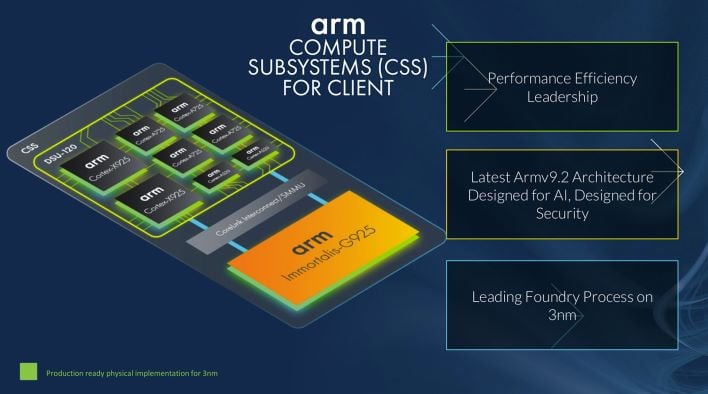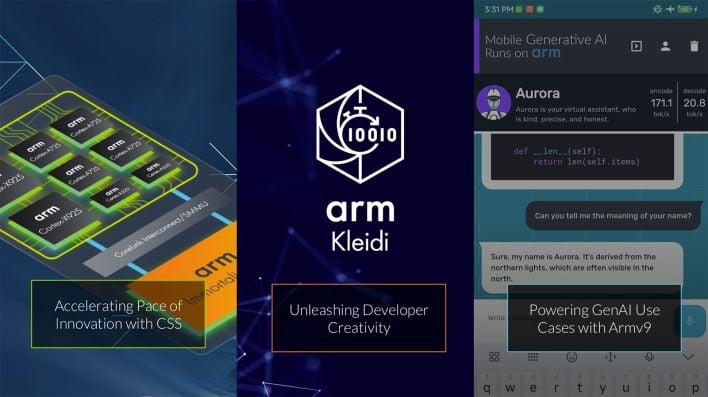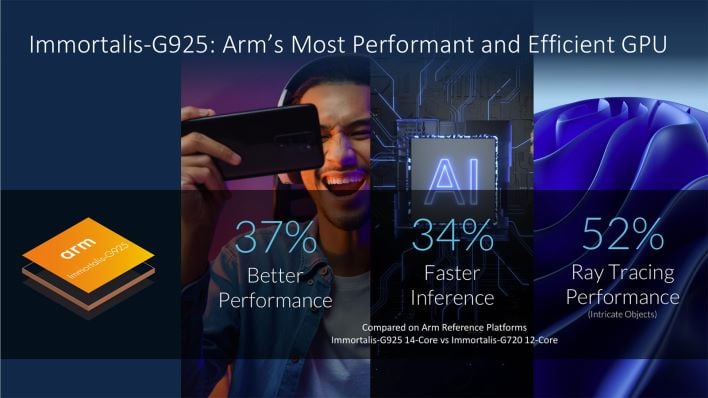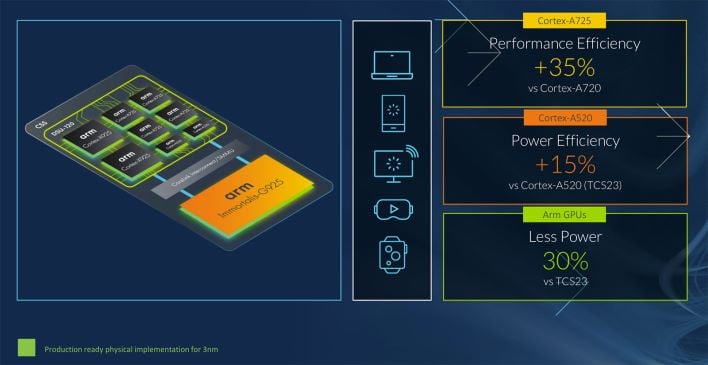
Arm Compute Subsystems For Client Updates
Arm emphasizes that it is currently offering “performance efficiency leadership,” which is true in certain parts of the market. The company also highlights the Arm v9.2 ISA that includes new extensions targeted at improving AI performance and the security of the Arm platform. If you’re more of a desktop PC user, this is generally analogous to the many extensions that Intel and AMD have added to the x86-64 ISA, such as AVX-512.
Kleidi is primarily targeted at AI applications, but not exclusively; there is in fact an AI-specific branch of Kleidi for AI called, predictably, KleidiAI, with “optimized low-level intrinsics for Arm CPUs, designed for highly-optimized generative AI frameworks.” There’s also another specific branch of Kleidi for computer vision called KleidiCV that Arm says is 75% faster than “default OpenCV implementations.”
Introducing The Cortex X925 CPU And Immortalis G925 GPU IP
Other notable qualities of the Cortex-X925 CPU include radically improved AI performance thanks to increased instruction decode and vector processing width as well as the ability to equip the CPU with up to 3 megabytes of L2 cache per core. That’s larger than you’ll find on Intel’s biggest CPUs right now, although we suspect the majority of Cortex-X925 implementations will probably go with a smaller L2, as cache is both expensive in terms of silicon area and power-hungry as well.
Android Platform Benefits: Performance And Efficiency
Taken as a whole, Arm says that its new Compute Subsystems platform offers improvements like a 30% reduction in GPU power usage and 15% overall power efficiency gains for the Cortex A520 “little” cores found in its TCS23 platform. It also notes “performance efficiency” gains of 35% for its updated Cortex-A725 cores, which serve as “Premium Efficiency” CPU cores that rest between the small A520 cores and the big Cortex-X family CPUs.
“Performance Efficiency” is an interesting metric; presumably what Arm means is that the revised CPUs achieve a +35% uplift in efficiency primarily on the basis of increased performance rather than reduced power consumption. In any case, these gains likely result primarily from the shift to a 3nm fabrication process, as Arm emphasizes throughout its press materials that it has production-ready implementations for the new hardware on an unspecified 3nm process.
Arm says that the refinements to software and hardware result in huge uplifts to performance for browsing and gaming, while video watching in the YouTube app apparently uses 10% less power on the latest devices. The updates to the Armv9.2 ISA also include new ISA extensions that can offer improved security, too. It’s not clear exactly when any of this will make it to market, but it depends on who licenses the technology, as Arm doesn’t sell its own processors to end users. It’s a safe bet, however, that these latest CPU core and GPU designs will make their wait into next-gen devices in the not too distant future.









Speak Your Mind